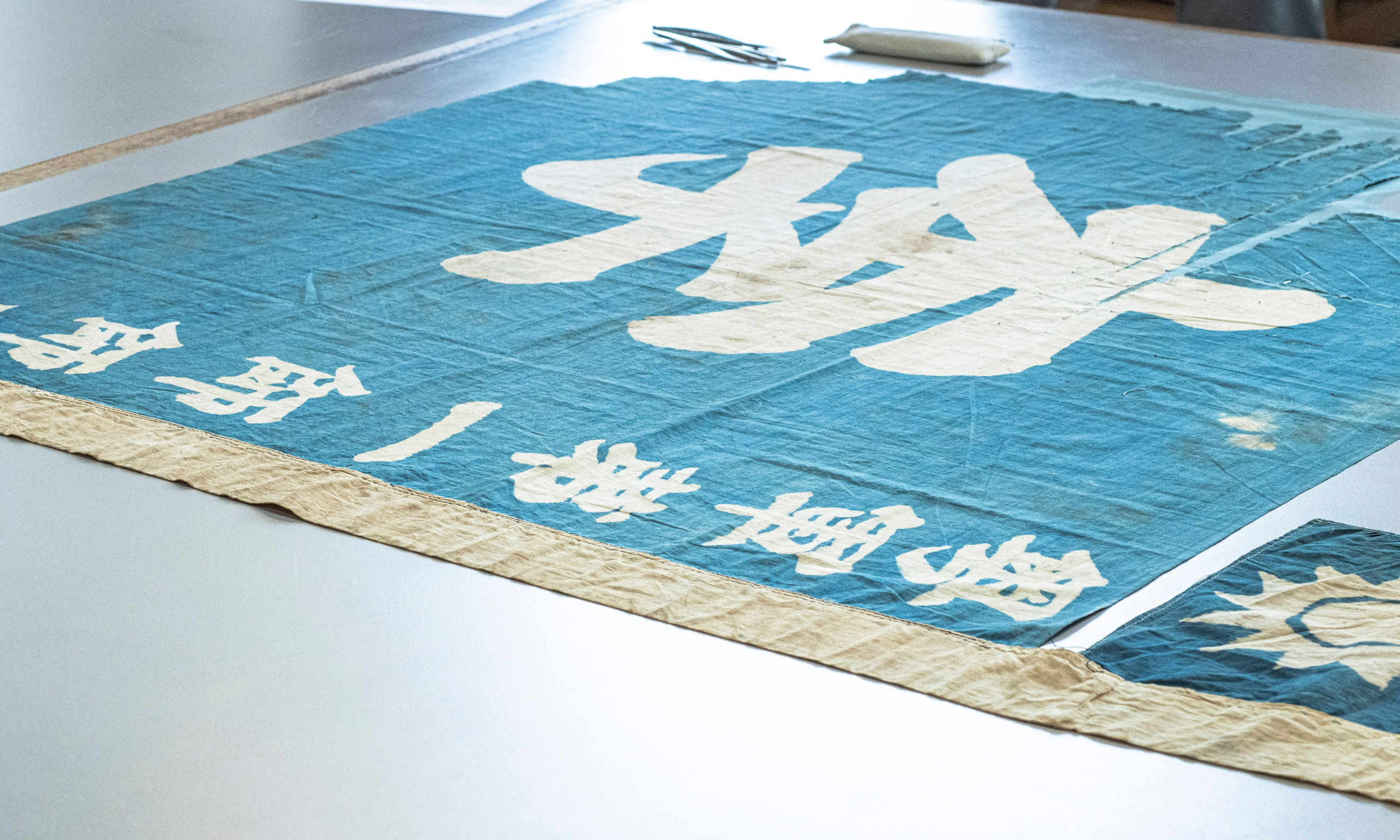Lieutenant J A H Hunter of HMS Nessus captured this flag from Chinese pirates near Canton in 1926. Pirates used it as false colours to disguise their identity and lull victims into a false sense of security.
© National Maritime Museum
An exceptionally rare artefact, a tattered, century old piece of blue cotton no bigger than a pillow case, is being conserved in the laboratories of the National Maritime Museum in Greenwich so that it can be exhibited for the first time next spring. Chinese characters identify the textile as a pirate ship’s false colours, a flag purporting to be that of an army commander, flown to deceive an approaching vessel until it was close enough to attack.
“The survival of any material genuinely connected to piracy is astonishingly rare,” says Robert Blyth, senior curator of world history at the National Maritime Museum in Greenwich, where the flag will be included in Pirates, a major exhibition opening in March 2025.
The slightly wonky batik dyed characters and cheap cotton—probably imported from Lancashire, Blyth says—suggest the flag was home made. It claims to represent Li Jishen, then commander-in-chief of China’s Guangdong Army. In 1926 the pirates sailing under the flag threatened one ship too many, and were captured by the British HMS Nessus off the coast of Southern China.
The pirates were handed over to the Chinese authorities and summarily decapitated on shore, but Lieutenant J A H Hunter brought the flag back to Britain as a souvenir. He kept it for the rest of his life.
The newly-conserved textile onsists of two flags on the same hoist. The smaller upper one shows the Kuomintang white sun in a blue sky design.
© National Maritime Museum
Hunter’s widow presented the flag to the museum in 1984. However, it was too fragile to display until textile conservator Aisling Macken began her present work, attaching the disintegrating cotton with near invisible stitches to a piece of fine silk specially dyed to match. The object appears to have been damaged by wind and salt water—Macken has found no charring from shots or evidence of sword slashes.
The exhibition will demolish cherished myths about pirates, including walking the plank and maps of buried treasure. It will also reveal that some kept disappointingly pragmatic rules on board—Bartholomew Roberts, better known as Black Bart, insisted on lights out by 8pm. Blyth doesn’t believe in tales of women pirates disguised undetectably as men either. There were women, but he believes they wore comfortable working clothes, just like the men.
An enduring glamour has been attached to pirates’ stories, endlessly repeated with ever more gory details since Captain Charles Johnson published General History of Pirates in 1724. Blyth believes the “Captain” to have been a bankrupt London printer, who got no further to sea than the banks of the Thames.
The exhibition will retell these tales with loans from international collections, and with many objects leaving the museum’s own stores for the first time. However, it will seek to represent the brutal reality behind the romance. As Blyth says, “these were horrible people”, and most came to violent ends.
However, in 1690, one Henry Avery captured a Mughal treasure ship stuffed with gold in the Indian Ocean, and was never heard of again. “The cargo was valued at £600,000 then, somewhere north of £100 million today,” Blyth says. “Quite a useful retirement fund."

